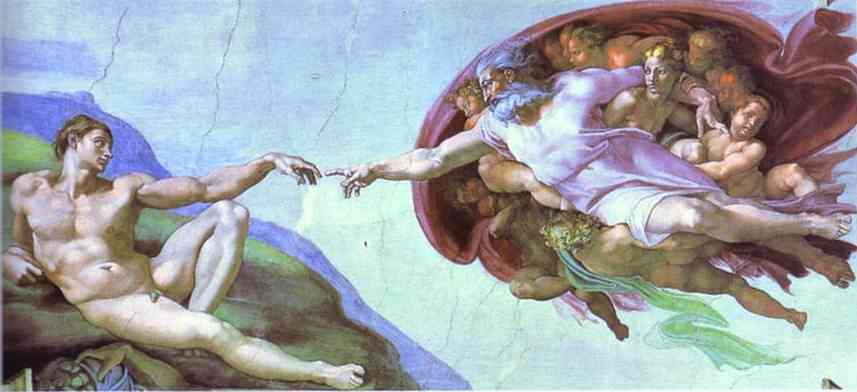Today is Father’s Day, so this week’s picture is a depiction of God the Father creating His first son, Adam. The Creation of Adam, as the work is known, was painted by Michelangelo on the vault of the Sistine Chapel ceiling, sometime during the early months of 1511 – shortly after the artist had embarked on his second and final campaign of work on the world’s most celebrated cycle of fresco paintings. The scale of the figures, far larger than any of those painted by Michelangelo on the Sistine ceiling during the previous two years, seems to have reflected a new and more heroic conception of the ceiling decoration as a whole. Work on the cycle had been held up, partly by the illness of Pope Leo X, the artist’s patron and first mover of the scheme, and partly by the long Roman winter, during which fresco painting was impossible. The delay may have been frustrating but it also gave Michelangelo a new sense of perspective on his own work. Gazing up at what he had already done, looking at scenes such as that of The Deluge, teeming with figures that are difficult indeed to appreciate from the floor of the chapel, he must have realised that he needed to work on a larger scale, not just for grandeur of effect, but for the sake of legibility.
As he contemplated the subject of The Creation of Adam, Michelangelo’s thoughts turned to other depictions of the same theme by earlier Renaissance artists. In particular, he probably had in mind a bronze panel by Jacopo della Quercia on the Porta Magna of San Petronio, in


